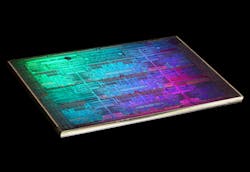Researchers Translate Cryptography Software into Silicon
How do you balance security with cost and battery life in an Internet of Things device? The computer chips embedded in traffic lights, oil pipelines or livestock tags could run cryptography to protect themselves from threats but that would put strain on batteries that in some cases have to last more than a decade.
The problem is that these algorithms use more computing power and memory than most 16-bit and 8-bit processors can sacrifice without draining battery life. In recent years, researchers have been trying to lower the bar for running public key cryptography, a type of encryption that allows computers to share information securely by sharing a secret key.
The latest example came from the Massachusetts Institute of Technology where researchers recently mapped these algorithms onto a slab of silicon. The custom chipset uses a fraction of the power and memory consumed by encryption software deployed to protect people ordering everything from toilet paper to clothes on the internet.
The hardware, detailed in a paper presented at the International Solid State Circuits Conference in San Francisco, uses about a tenth of the memory and 1/400 of the power that it would take to execute public key cryptography in software. The custom circuitry is also said to run through the encryption process 500 times faster than software.
“They move a certain amount of functionality that used to be in software into hardware,” said Xiaolin Lu, director of the Internet of Things lab at Texas Instruments, in a statement. “That has advantages that include power and cost. But from an industrial IoT perspective, it’s also a more user-friendly implementation.”
The system is hardwired to handle a specific type of encryption based on mathematical functions called elliptical curves, which are used in most modern public key cryptography techniques. The chip also contains a general-purpose processor that can be enlisted by the custom circuitry to run other algorithms based on elliptical curves.
“There is a lot of debate regarding which curve is secure and which curve to use, and there are multiple governments with different standards coming up that talk about different curves,” said Utsav Banerjee, the lead author of the paper, in a statement. “With this chip, we can support all of them, and hopefully, when new curves come along in the future, we can support them.”
About the Author
James Morra
Senior Editor
James Morra is the senior editor for Electronic Design, covering the semiconductor industry and new technology trends, with a focus on power electronics and power management. He also reports on the business behind electrical engineering, including the electronics supply chain. He joined Electronic Design in 2015 and is based in Chicago, Illinois.

